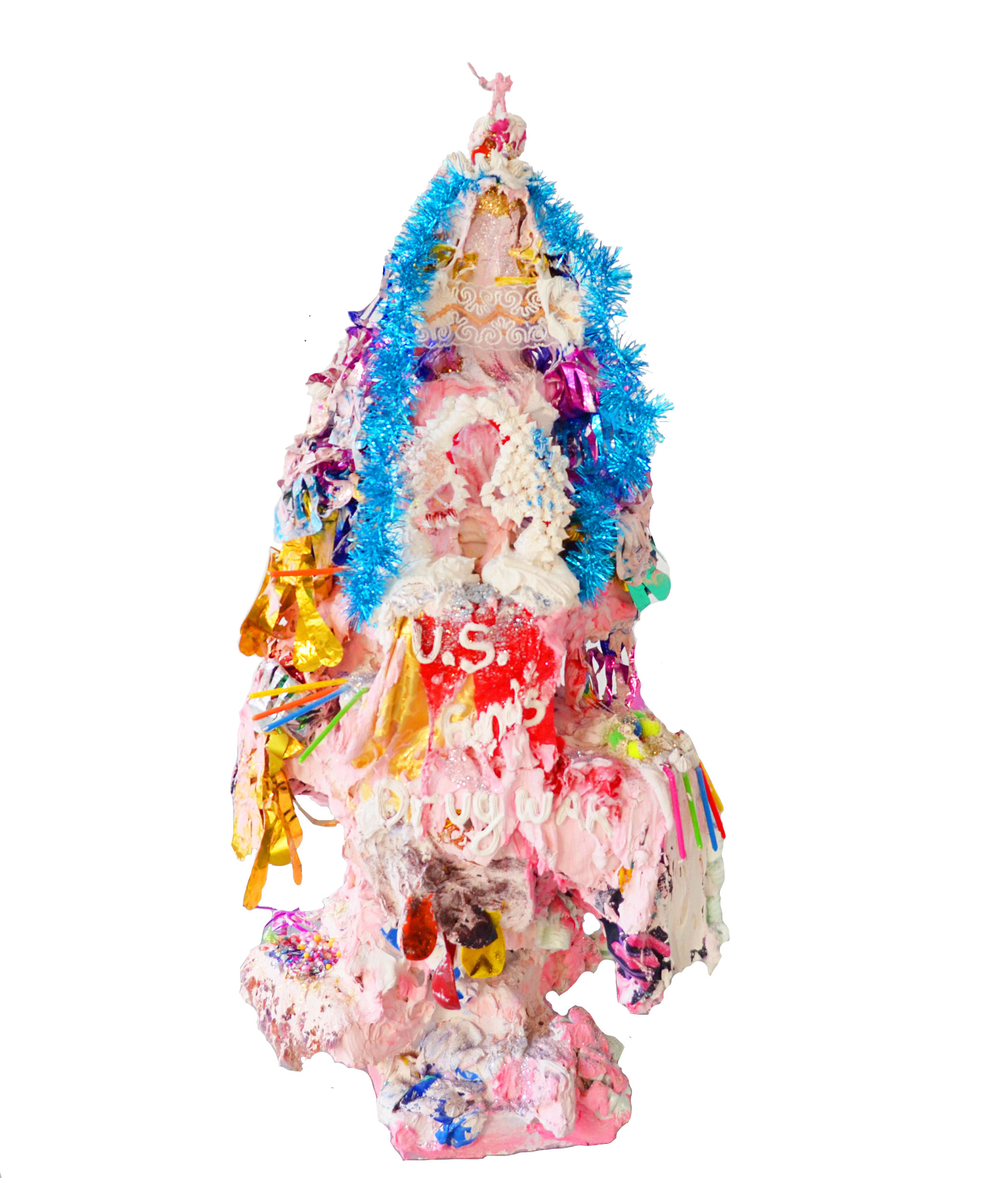
- This event has passed.
Record of Memory
June 1, 2019 @ 4:00 pm - 6:00 pm
Free
Carl Pope, Conner Green, Elisa Harkins, Osuma James Nakagawa & Yvette Mayorga
May 10-June 22
Record of Memory is a survey of artists who are reflecting on existing monuments and fashioning new monuments. At the time a public monument is conceived, it is a tribute to our cities built by its citizens and dedicated to social progress, industrial achievement, civic interest, patriotism and culture. Works were selected with this idea of monuments in mind by curators Shauta Marsh, Garry Holstein, and Jeremy Efroymson as part of Social Alchemy, a series of exhibitions and events exploring the concepts driving our current ideas of utopia and dystopia.
Monuments are symbols of hope, of warning, of honor, encountered daily. We often think of them as sculpture or statues but increasingly we are all creating them on the internet in the form of videos, websites, even Facebook profiles. Our monuments remind present and future people of what we should be striving for. They reference our current goals of utopia. Other times they serve as reminders of tragedy/of dystopia, and what happens when we deviate from our utopic goals, to help us avoid re-occurrence.
Carl Pope’s photography pulls us into his experience exploring rural Germany via train. The color process on his work references the multi-colored rainbow, a symbol of the LGBTQ community. The nuclear reactor, Mother Mary and the Tin Man give the viewer a new perspective, both capturing and asking us to reconsider what we believe about these objects and characters by presenting them the way we see standard monuments.
Conner Green’s inverted collage prints resembling schematic drawings investigate the social ramifications of monumental architecture through collages of found materials, drawings, and photographs. “I understand ‘architecture’ to refer to more than just the design and decoration of buildings, but also to how thought or action can make order and meaning out of random space,” Green says. “My work, in part, attempts to excavate those embedded meanings.” The rendered forms do not refer to any extant structures; rather they attempt to portray a kind of typological composite of built forms throughout history.
Muscogee (Creek) Hymn and The Plain Indians Sign Language video works by Elisa Harkins are monuments in their right. In Plain Indians Sign Language, Harkins tells the story of her friend’s death. She uses sign language, which was invented by indigenous people and adopted by settlers, to both honor her friend and remind us that ASL came from a people and culture white settlers attempted to destroy. Muscogee (Creek) Hymn asks us to reflect on how song influences our ideas. Creek songs were never taught, rather learned. The Creek may not know the details of where those hymns came from—common belief is they’re handed down from God himself—but they know what’s important: the people, the milestones, and the stories the songs represent.
In Osamu James Nakagawa’s work, Maps, the landscape often functions as a witness to history and suffering, as well as a platform to examine conflicts political and personal in nature. The works are rubbings of monuments to the dead erected post WWII throughout Japan. Raised in Tokyo, Japan, Nakagawa’s family moved to Houston, Texas when he was fifteen. As an artist he mines the complicated pasts of both countries, touching on nationalism, family, pop-culture, tensions between eastern and western ideals, and war.
Every aspect of Yvette Mayorga’s built world is adorned with spectacular, rapacious iconography. Monumental fashion accessories and gendered toys interrogate the true meaning of “status,” while decadent, Colonial aesthetics remind us of the fragility of national identity, and how frequently it depends on appearances. Her series Monuments feature sculptures that are an absurdist, Rococo Candy Land, where frivolity intersects with fear, as soldiers and ICE agents come face to face with quinceañera cakes, white swans, and Polly Pocket adventure sets.
A Record of Memory requests that viewers reflect on our public and private monuments. How do they currently embody what our county, our city, our neighborhoods, what we as individuals stand for? How do we begin to reach a consensus with the current social and political divides?
Photo: Yvette Mayorga, US Funds Drug War.
